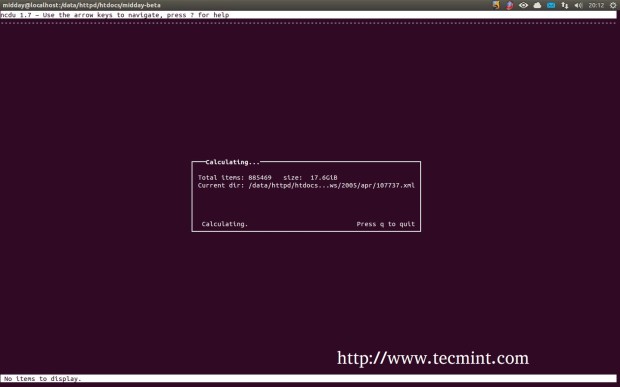ncdu (NCurses Disk Usage) is a command line version of the most popular “du command“. It is based on ncurses and provides a fastest way to analyse and track what files and directories are using your disk space in Linux. It provides an excellent ncurses based interface to display the information in more intuitive way like columns for how much disk space used in megabytes, gigabytes and graphical bar usage, file/directory names, file deletion, refresh, etc. ncdu aims to be simple, fast and easy to use program and runs on any minimal Linux/Unix based system with ncurses installed.
This article explains you through the process of installing and using NCDU program on a Linux system.
Installing ncdu (NCurses Disk Usage)
The “ncdu” package is not available under RHEL, CentOS, Fedora, Scientific Linux distributions, you must have epel repository enabled on your system to install it using yum command.
The “ncdu” utility is available on Ubuntu, Linux Mint and Debian from the package manager system, use the following apt-get command to install it.
How Do I Use ncdu
Simply, run the “ncdu” command from the terminal. Once you run, it will start scanning for number of files and directories and disk usage of current working directory.
Scanning
Tree View With Sizes
Once, scanning completes, it will present the tree structure of files and folders along with their disk usage in human readable format with graphical bar presentation.
▬▬▬▬▬▬▬▬▬▬▬▬▬▬▬▬▬▬▬▬▬▬▬▬▬▬▬▬▬
► Read more: http://adf.ly/1n7Sz0
▬▬▬▬▬▬▬▬▬▬▬▬▬▬▬▬▬▬▬▬▬▬▬▬▬▬▬▬▬


No comments:
Post a Comment